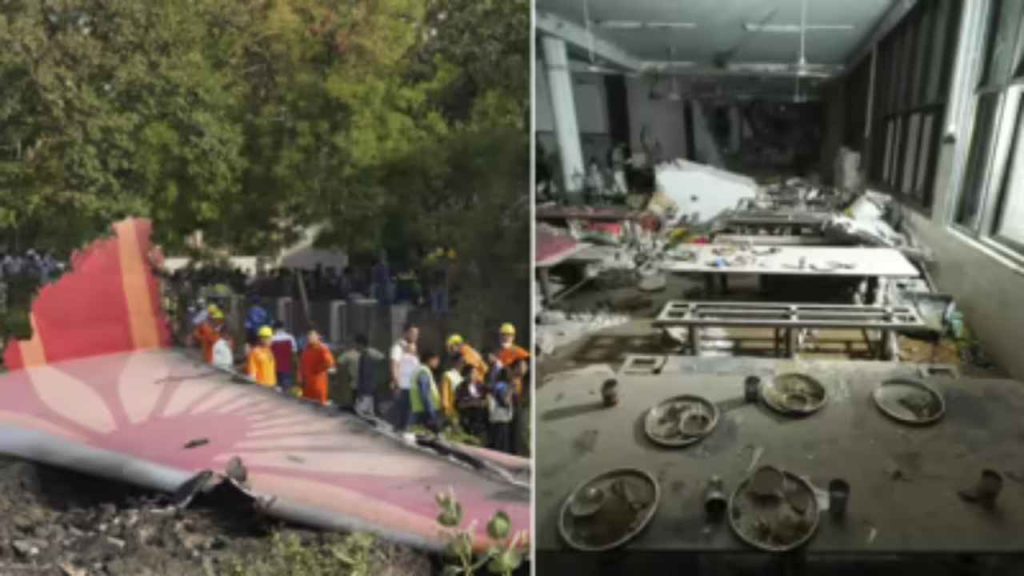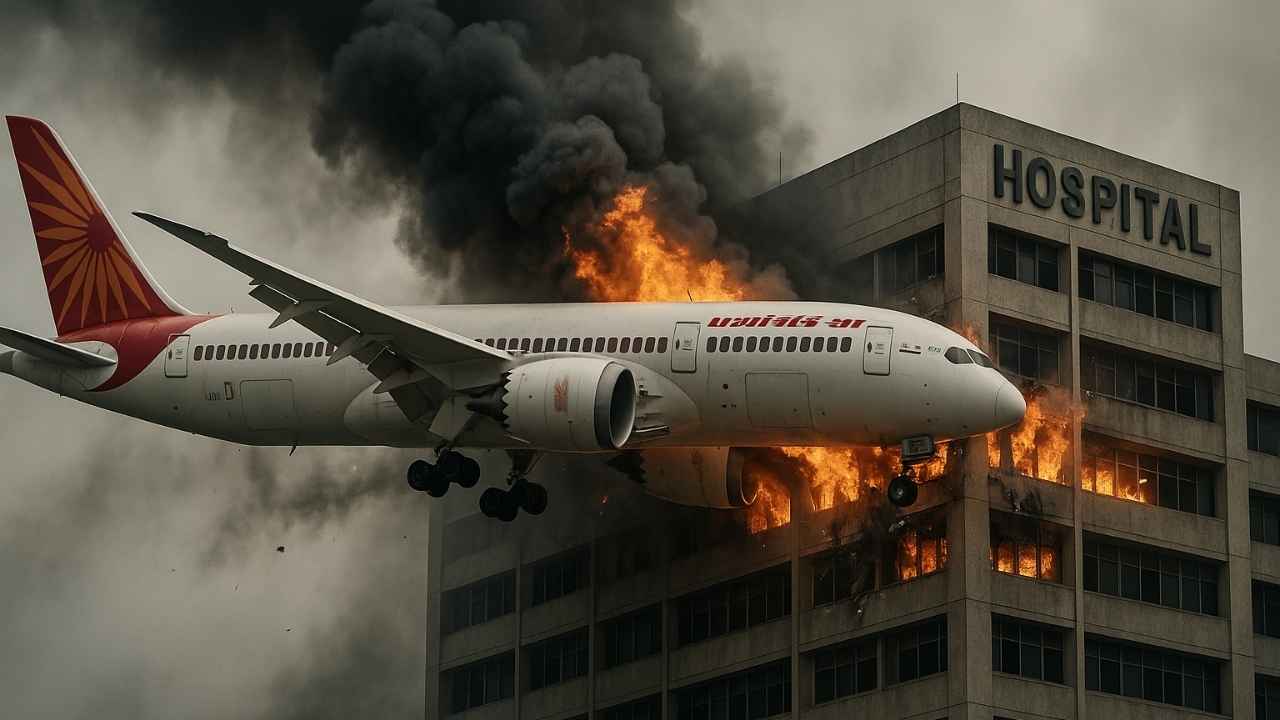In today’s world, air travel has become an inseparable part of both business and leisure journeys. Whether you’re flying for a corporate meeting or a vacation abroad, commercial aircrafts offer unmatched speed and convenience. Among these, the Boeing 787 Dreamliner has stood out as one of the most advanced, fuel-efficient, and passenger-friendly planes in the world.
But what happens when such a symbol of aviation safety turns into the subject of one of the deadliest air crashes in India’s history?
That’s exactly what happened on June 12, 2025, when an Air India Boeing 787-8 Dreamliner crashed shortly after taking off from Ahmedabad airport. This heart-wrenching accident has not only shocked the nation but also raised critical questions about aircraft safety, airport environments, and maintenance protocols.
The Tragic Incident: A Brief Overview
At 1:39 PM, Flight AI-117 took off from Ahmedabad, bound for London. Onboard were 230 passengers, 2 Pilots, and 10 crew members. Merely 20–30 seconds after take-off, the pilots issued a desperate Mayday call. Tragically, there was no time for corrective action. The aircraft crashed into a nearby hospital building, resulting in massive destruction both in the air and on the ground.
Out of 242 people, only one passenger survived—a UK citizen named Mr. Vishwashkumar Ramesh, seated in 11A. He miraculously walked to the ambulance after rescue.

The crash also killed five doctors who were dining at the hospital’s top-floor cafeteria. Several other medical staff and students were injured. While the exact number of total casualties is still being determined, the tragedy has already been labeled one of India’s worst aviation disasters.
What Went Wrong with Boeing 787 Dreamliner?
When an aircraft takes off, it must first reach V1 speed—the point of no return—beyond which take-off must be completed even if an engine fails. In this case, the Boeing 787 Dreamliner had already crossed that speed threshold and had lifted off successfully. However, the aircraft barely managed to reach 600 feet in altitude—nowhere near enough to stabilize, gain height, or navigate to a safe landing zone.
This low altitude limited the pilots’ response time, making it impossible to redirect the aircraft or minimize the impact. The likely cause: failure to gain sufficient post-V1 thrust, which could be attributed to engine failure, fuel blockage, bird strike, pilot error, or even sabotage—a theory that can’t be ruled out, especially in the post-“Sindoor” security climate.
Possible Causes of Boeing 787 Dreamliner Crash: A Closer Look
1. Bird Strike
Bird strikes are alarmingly common near urban airports. Ahmedabad airport alone has reported multiple incidents in recent years. When airports are surrounded by crowded residential areas and waste dumps, they attract scavenger birds like crows and vultures. Kolkata airport, for instance, has a nearby waste dumping ground that has repeatedly posed threats to incoming and outgoing flights. A 1.5 kg vulture can disable a plane engine upon impact.
Was the recent crash due to a bird strike? That’s a strong possibility—however, both engines failure by bird strike is doubtful; in fact, it an extremely rare but not impossible scenario if rows of birds fly across.
2. Fuel Line Blockage or Maintenance Error
The Boeing 787 Dreamliner is powered by two engines designed to operate independently. Even if one fails, the other can keep the aircraft airborne. A double engine failure is almost unheard of. If both engines failed, it may suggest a fuel system blockage, possibly a result of overlooked errors by the maintenance crew.
The aircraft had been flying extensively before the final fly on 12 June 2025—recently operating routes from Delhi to Paris, Paris to Delhi, and Delhi to Ahmedabad. Some pilots have admitted that aircraft are often need to run for over 17 hours out of 24 hours mainly to cover leasing costs, leaving a short maintenance window of only 5–7 hours. This limited time may result in critical errors being missed.
If that’s the case, this crash could have been avoided with better checks and protocols.
Understanding the Boeing 787 Dreamliner
Despite this tragic incident, it’s important to remember that the Boeing 787 Dreamliner is globally renowned for its advanced safety features and fuel efficiency. Here’s what makes it unique:
- Built primarily from composite materials, it is lighter yet stronger than traditional aircraft.
- Features modern avionics systems like Synthetic Vision and Integrated Modular Avionics to enhance pilot awareness.
- Has a range of over 7,300 nautical miles, ideal for long-haul routes.
- Equipped with large dimmable windows and quiet cabins for passenger comfort.
- Advanced noise reduction and lighting systems simulate natural daylight for reduced jet lag.
With over 2.3 million individual parts, the Dreamliner is a marvel of engineering. However, not a single part is manufactured in India, and here, all servicing is done by Indian ground crews working for third-party companies. This separation between manufacturing and servicing may lead to knowledge gaps and missed technical insights.
The Broader Concerns: Airport Safety and Workforce Gaps
This accident also puts a spotlight on broader systemic issues. Indian airports, especially in metro cities, are surrounded by urban sprawl, leaving no buffer zones for emergency situations. Waste dumps and high-rise buildings near runways increase the risk of fatal bird strikes.
Additionally, India’s aviation infrastructure is under strain. The country aims to expand to 350 airports and 3,000 aircraft by 2047, but there is a severe shortage of trained maintenance engineers, ground staff, and experienced pilots. Without strong government oversight and workforce planning, such expansions could result in more tragic outcomes.
The Need for Stronger Oversight in Indian Aviation
In the aftermath of such a devastating incident, it’s easy to point fingers—at the pilots, the airline, or even the aircraft manufacturer, Boeing. But the truth is often more layered. The black box will hopefully provide crucial insights into what exactly caused this horrific crash. Was it human error, a technical glitch, or an issue of systemic negligence?
As India’s aviation industry rapidly grows, primarily driven by private carriers, the role of government oversight becomes crucial. It’s not enough to increase airport numbers or expand fleets; there must be strict regulatory monitoring, frequent safety audits, and stringent maintenance protocols. Aviation safety can’t be compromised in the race for commercial growth.
More Travel News: Philippines Offers Visa-Free Entry to Indian Tourists: Uncover Philippines Tourism
Invest in Talent, Build in India: A Long-Term Vision
One of the most disturbing facts from this crash is that not a single part of the Boeing 787 Dreamliner is manufactured in India, despite it being widely used by Indian airlines. This exposes a harsh truth: while we operate some of the world’s most advanced aircraft, we remain technologically dependent on other nations.
India boasts 23 IITs, over 2,200 government engineering colleges, 6,600+ private engineering institutions, and thousands of science colleges. And yet, the majority of our top talent migrates abroad. Why? Because there’s a lack of job opportunities, innovation infrastructure, and competitive pay.
If India truly wants to turn the “Make in India” vision into reality, it must start by creating an ecosystem where talent is nurtured, retained, and fairly compensated. Without investing in the right places—like aerospace R&D, aviation infrastructure, engineering innovation, and complete scientific breakthrough—national slogans will remain hollow promises.
The way forward isn’t just about better planes or better airports. It’s about building a self-reliant, future-ready aviation industry—one that leverages India’s intellectual capital, strengthens safety norms, and earns global trust. Only then can we prevent such heartbreaking tragedies from becoming recurring headlines.
Final Thoughts
As passengers, we put immense trust in the aircraft we board and the crew who operate them. The Boeing 787 Dreamliner has long stood as a beacon of innovation and safety in aviation. But even the best aircraft can become vulnerable in the absence of proper maintenance, infrastructure, and policy oversight.
This crash is not just a tragic event—it’s a wake-up call.
To the families who lost their loved ones, we offer our deepest condolences. To Mr. Vishwashkumar Ramesh, the lone survivor, and plenty of other wounded citizen, we wish a full and speedy recovery for all of them.
And to everyone who boards a flight in the future—let today’s tragedy remind us all why safety should never be compromised, no matter how advanced the aircraft.
Sources: India Today, AVP







